THIS 29-YEAR-OLD ARTIST CURRENTLY FEATURED WITHIN THE ALAMAK! PAVILION ON THE OCCASION OF THE 2017 VENICE ART BIENNALE COMBINES PAINTING AND PERFORMANCE TO QUESTION SOCIAL NORMS.
Kawita Vatanajyankur is often times perceived as an extreme feminist artist, a fact that makes it unavoidable that her work be interpreted in such direction. Using her body as an artifact (a scale, a broom, a mob, a cloth hung on the rack, etc.), her (semi-performance) video art takes place in front of colorful backdrops, and through the seemingly provocative expressions, projects and elaborates upon the objectification of females in the male-dominant society.
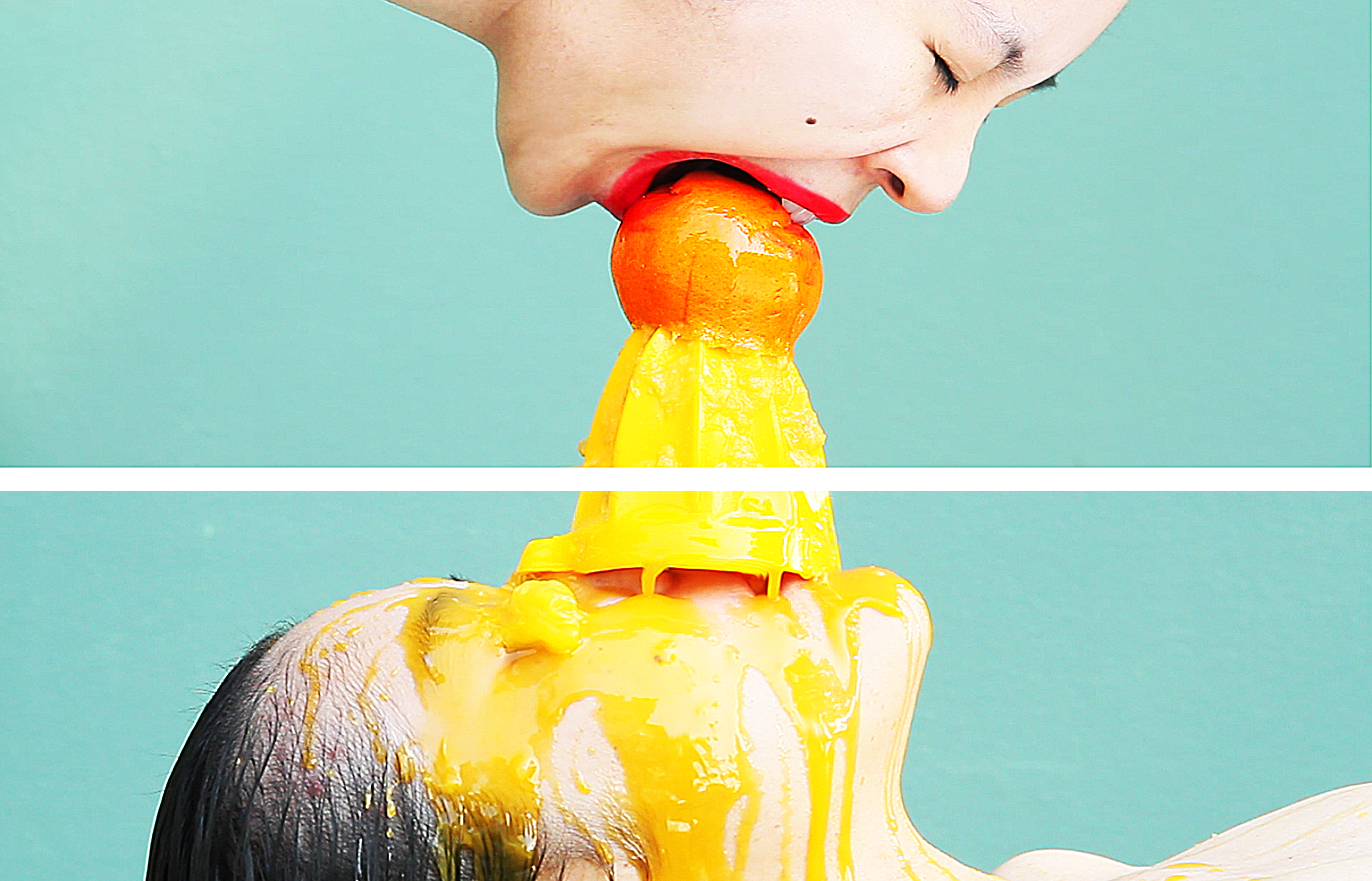
Squeezers, 2015, Image courtesy of Kawita Vatanajyankur
To many people’s surprise, Vatanajyankur’s artistic education and practice has always been in painting, and media and video art wasn’t her field of study at RMIT University from which she graduated in 2011. Seeing a video exhibition by American artist, Bill Viola at St Carthage’s Church in Melbourne, however, served as a significant turning point that got her interested in the use of video as an artistic medium. With the grading criteria of the course she was studying in (painting), Vatanajyankur tried to incorporate the conceptualization and working process of painting into her video works, from compositions to coloring (if you look close enough, you can see the brush strokes the artist paints, which are added into the work during the editing process). These elements eventually became the characteristics of her artistic repertoire. The presentation of her video still contains minimal movement with no plot or scene changes, making her work look very much like a painting in a light box instead of a time-based work, especially when looked at from afar. In many cases, the use of colors and camera angles project the videos in a manner that makes them appear almost as if they were two-dimensional still images. During the year of her graduation, Vatanajyankur signed a contract with Stills Gallery in Sydney that has allowed for the artist to share her works with audiences of different countries through both group and solo exhibitions.
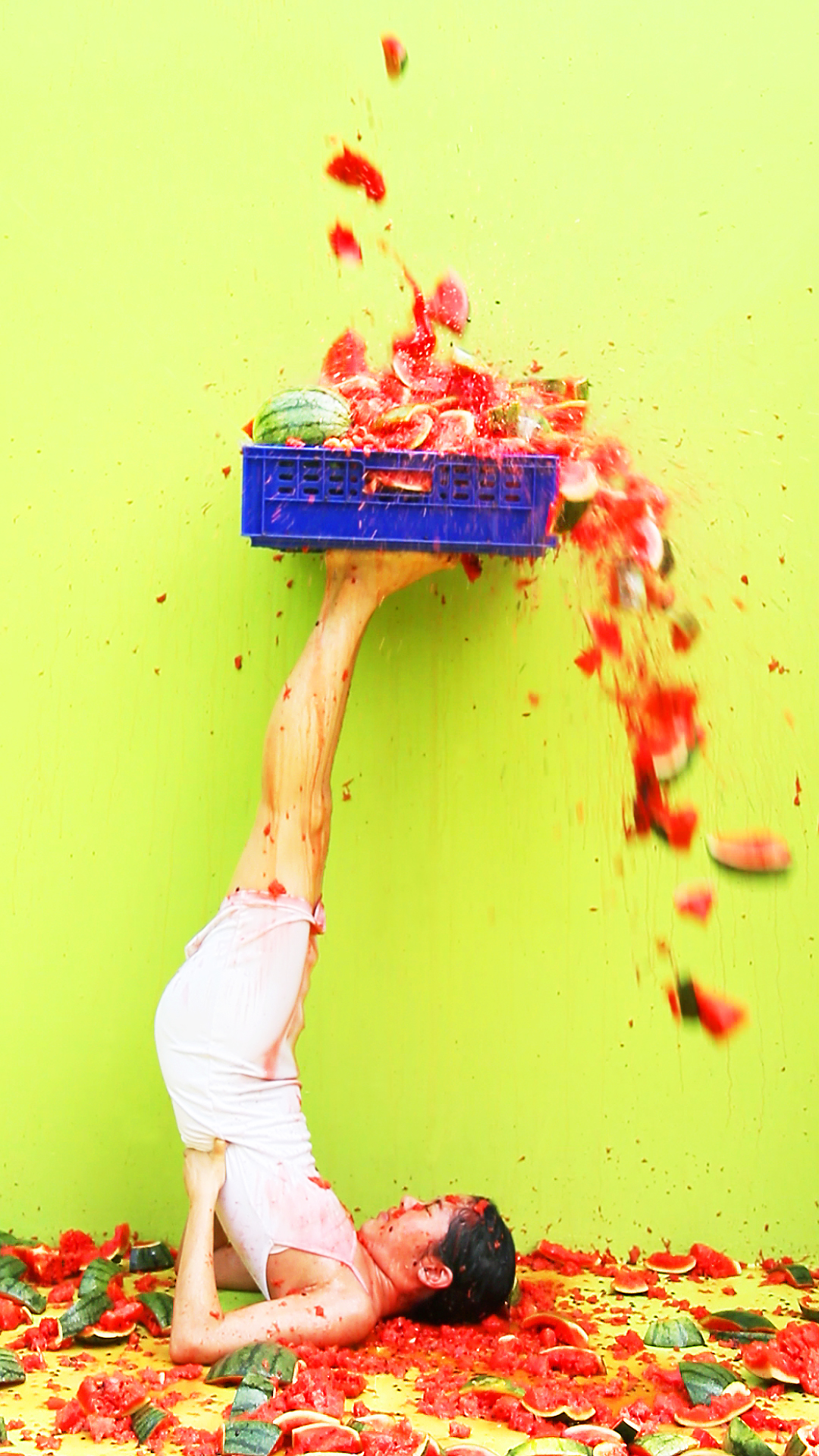
The Scale, 2015, Image courtesy of Kawita Vatanajyankur
The past year (2016) had been eventful for Vatanajyankur with her inclusion in an impressive number of important shows such as the ‘Thailand Eye’ group exhibition at Saatchi Gallery in London held during the early part of the year. The same exhibition later traveled to Thailand where it was showcased at the Bangkok Art and Culture Centre. For the latter part of 2016, Vatanajyankur took ‘Work’ to Clear Edition & Gallery in Japan where viewers’ interpretations of the work were still associated primarily with its ‘advocacy of gender equality.’ Such repetitive association can be a good thing for it facilitates the exchange of roles between the work and viewers. The role of viewers as the interpreter is reversed as the work does its job of reflecting the attitudes of the audiences in different countries. Vatanajyankur told us about the stark differences she received in terms of feedback from spectators in Asia, Australia and South American countries. Viewers who are Japanese women are more into the issues of womens’ social status in the patriarchal society and the social conditions that result in Japan’s machine-like hard-working society. The reactions are more diverse in the case of Thailand, which is presumably derived from the diversity in the society and the presence of women in Thai culture across many different roles. What Vatanajyankur also learned about was the intense and continual suppression of women in South American societies. “With the female body, everybody instantly thinks that it’s a feminist piece while I want to discuss something that is so much more universal,” shared Vatanajyankur. “But I do think it’s a good thing that many groups of people identify with my work. If it’s only one subject matter, it speaks to only one group of people.”
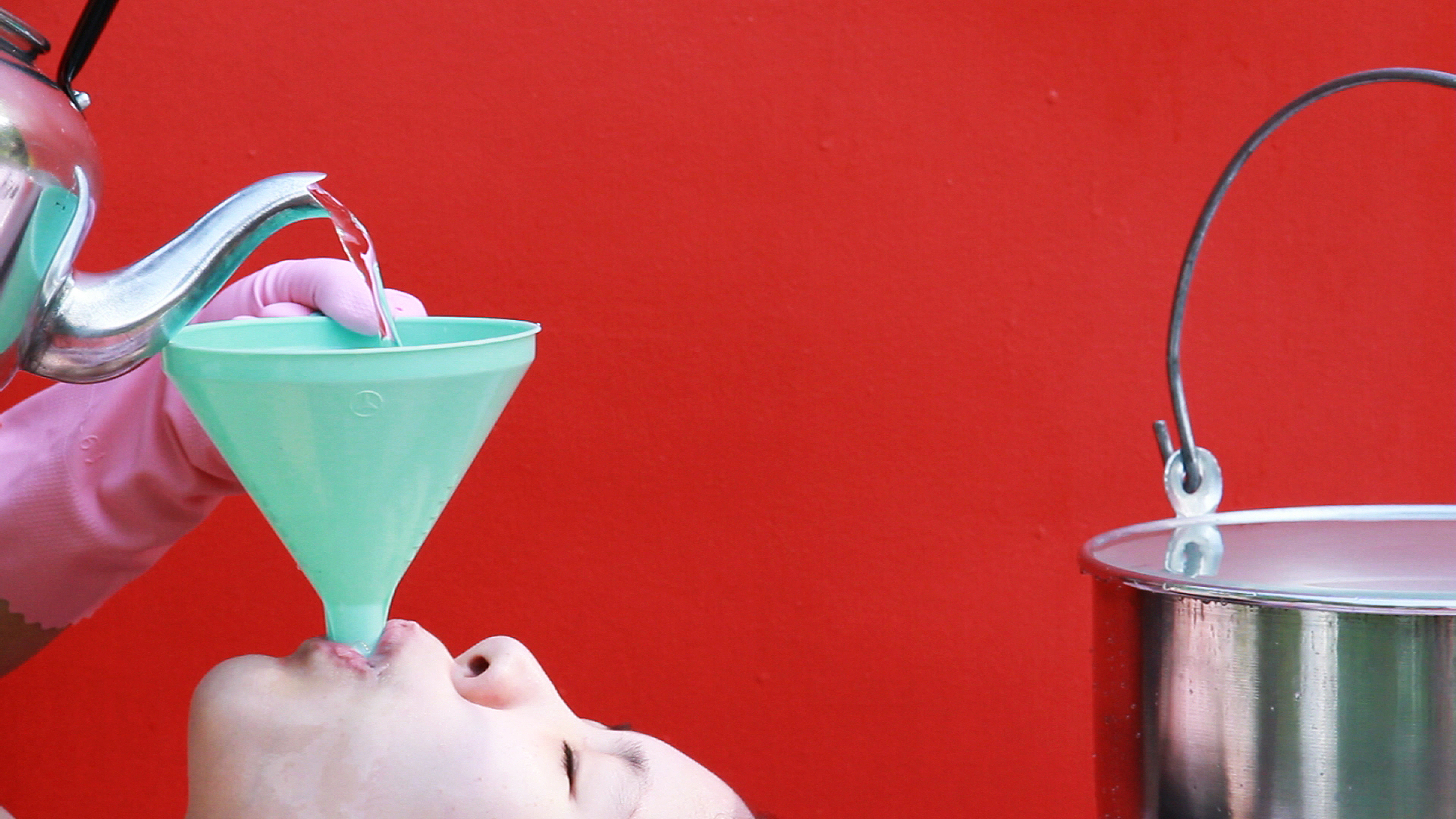
Poured, 2013, Image courtesy of Kawita Vatanajyankur
“Back then I was pretty preoccupied by the question as to why we had to live in a society where everyone is expected to work. We’re trapped in this cycle where we work, get paid and use the money we earn every month. If there was a new world, the system could be different.” The more universal issue than gender that Vatanajyankur talks about is the Human Condition (Hannah Arendt, 1958), the theory that proposes a tripartite division between the human activities of labor, work, and action (details about the theory won’t be further elaborated upon). Simply put, it’s the stage where every human being is put in the status of ‘labor’ and controlled by certain social conditions that require them to work for a living. From this question, Vatanajyankur picks up ‘housework’ as the subject matter by viewing it as a symbol of the cycle of life conceived from this particular system of the working process, which is repeated in the same pattern every day with a result (cleanness), that is more abstract but comes with certain conditions that force us to maintain the regularity of the action. The idea of being trapped in the system is presented through the style of the video, which shows the ‘repetition’ and the inability to move forward. Additionally, Vatanajyankur’s wish is to discuss the issue of equality (despite the fact that the work is often considered in reference to inequality) and for the work to symbolize the equality of both male and female genders from the human aspect where everyone is in the position of ‘labor.’ “You may notice that each series of my work involves different elements of a working process, from Tools (Jam Factory, 2015) and Machinized (Stills Gallery, 2016) to Work (Clear Edition & Gallery, 2016).”
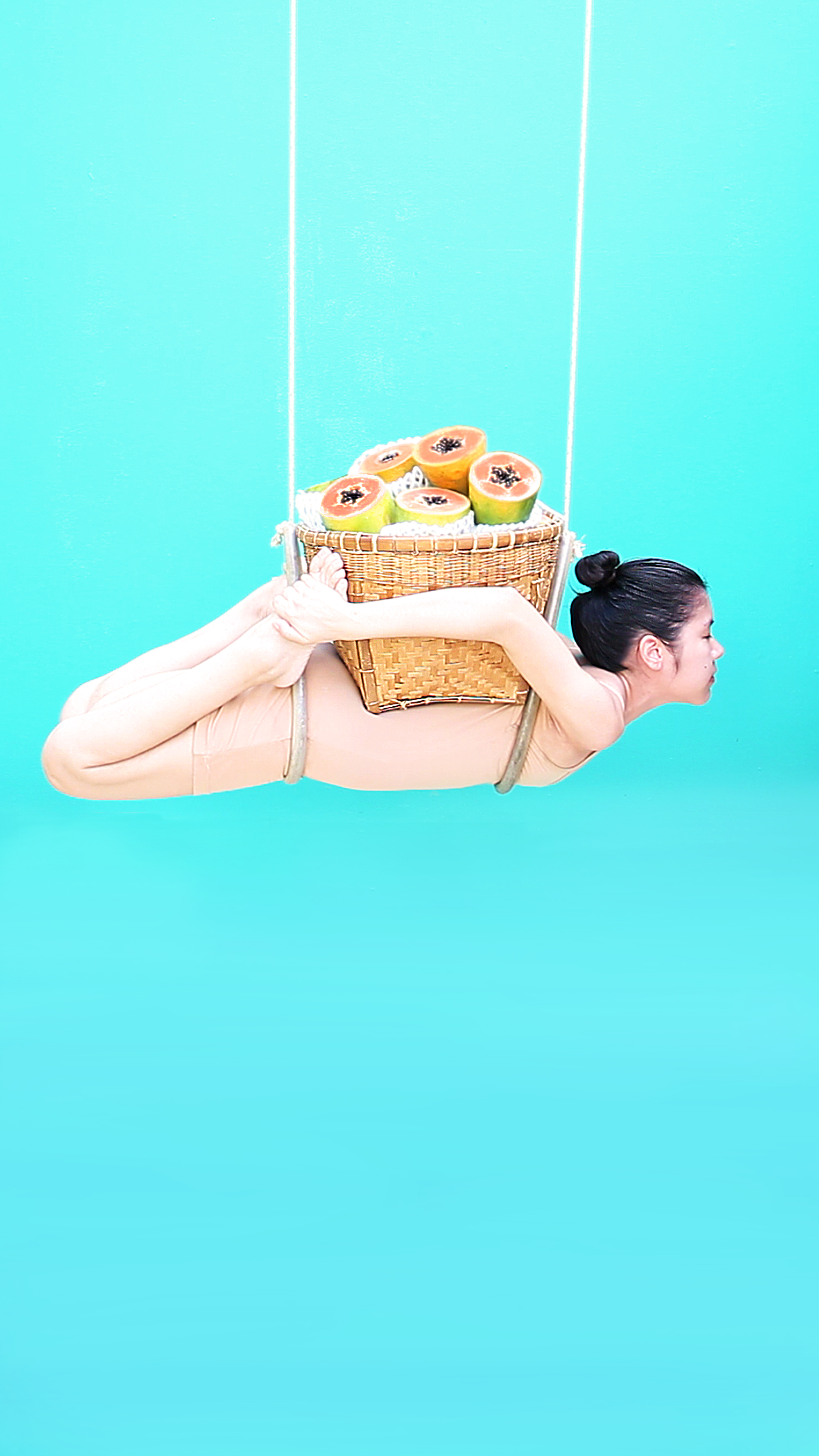
The Lift, 2015, Image courtesy of Kawita Vatanajyankur
Once asked about the possibility of doing a performance piece, Vatanajyankur told art4d that it will never happen because it will spoil the character and artistic method of her painting. Those who are familiar with her work would know that Vatanajyankur’s performance is just as interesting as the idea behind it or the techniques employed in the video editing. “For each work, I have to study what I do in order to survive a situation within the space of 3 minutes.” Vatanajyankur further explained that in works such as The Dustpan, 2014 where she performed as a broom, she was hung upside down and strangled with her face buried in the dust of the dustpan once every minute. For Poured, 2013 and Soaked, 2013, the act was no different from being drowned as Vatanajyankur designed her own method and breathing for the pieces. For Colander, 2016, in particular, in which the artist acts as a noodle strainer, a specific kind of breathing was incorporated (Vatanajyankur added that this work was a whole new level of torture for her). The breathing technique of synchronized swimming athletes was applied as she exhaled while going under the water, and inhaled when coming up from the water. “After a while, I was starting to feel better. It was like I exceeded my limit and actually became the object.”

The Ice Shaver, 2013, Image courtesy of Kawita Vatanajyankur
The year 2017 will be a milestone of Vatanajyankur’s artistic career with a show at the Australian Centre for Photography (Sydney) and Melbourne Arts Centre in February, as well as a solo exhibition in Thailand in the latter part of the year. It remains to be seen what the feedback from the European viewers will be and in which direction the issue can be ramified in her future work (certainly she can’t continue to do this type of performance forever). “When I get older, my interests will probably change, and consequently it may change the style of my work.”
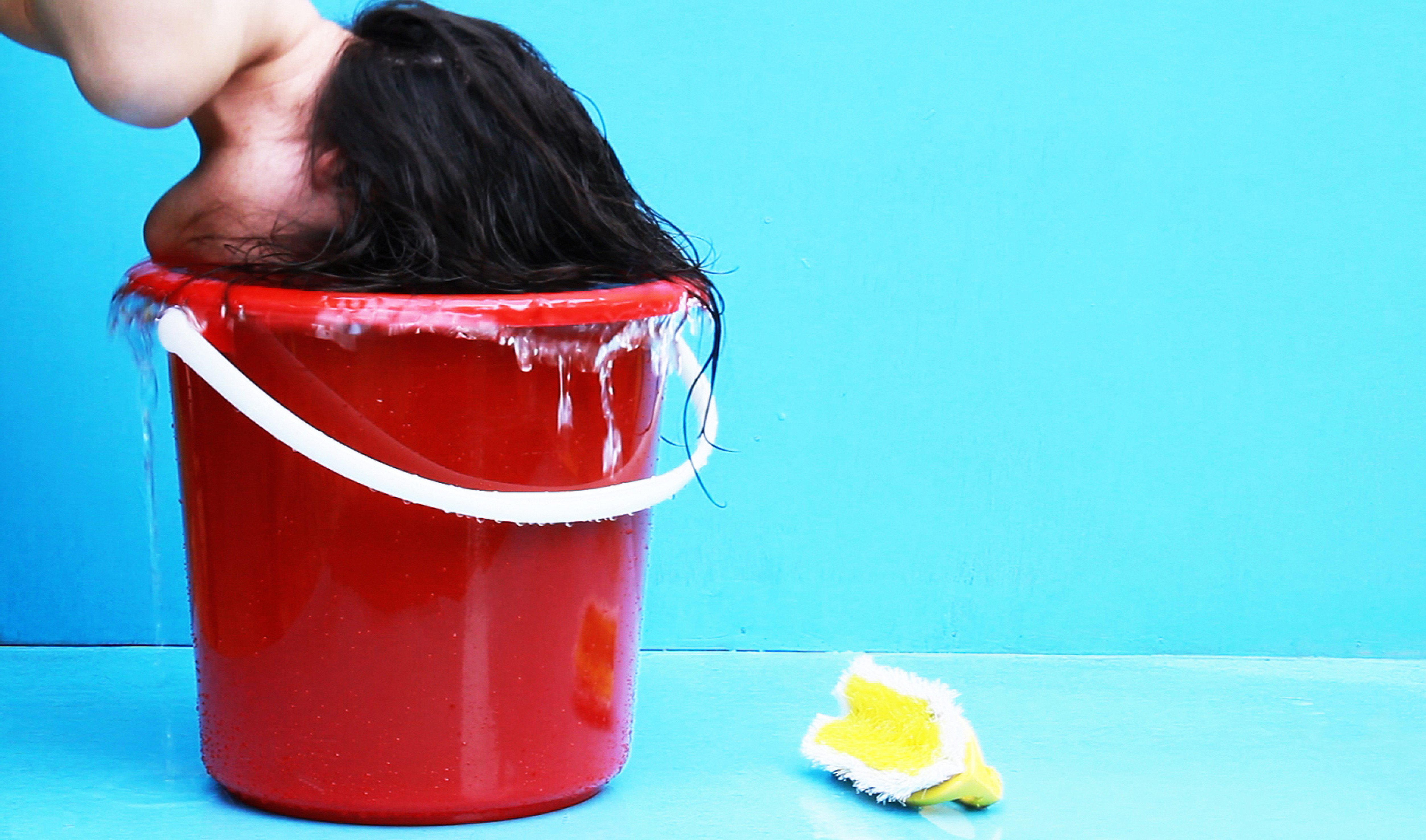
Soaked, 2013, Image courtesy of Kawita Vatanajyankur
TEXT: NAPAT CHARITBUTRA
www.kawita-v.com
www.alamakproject.com

